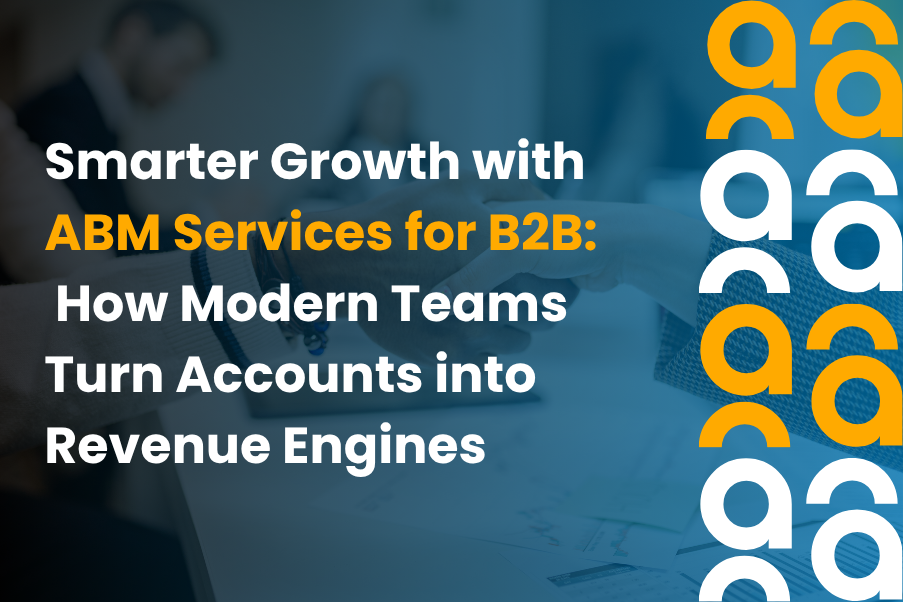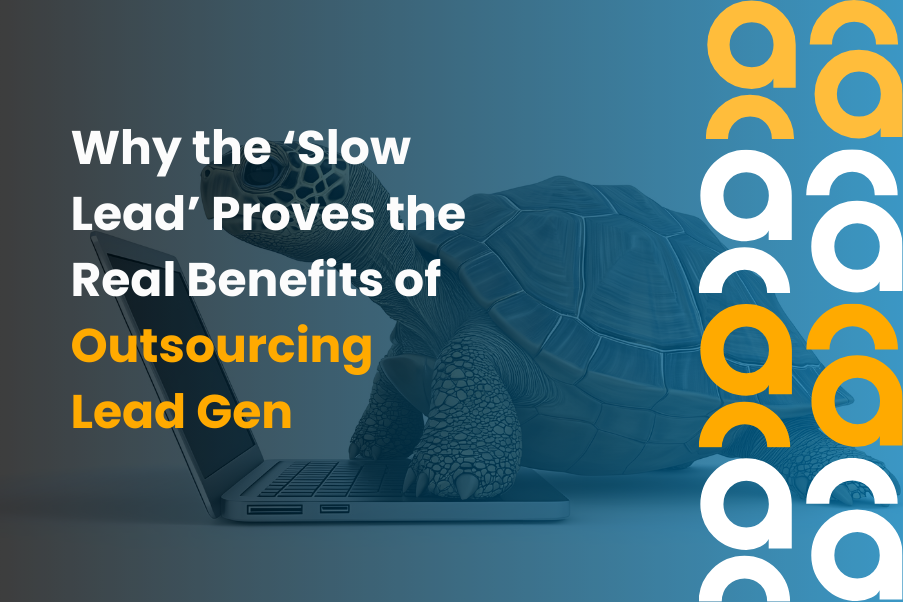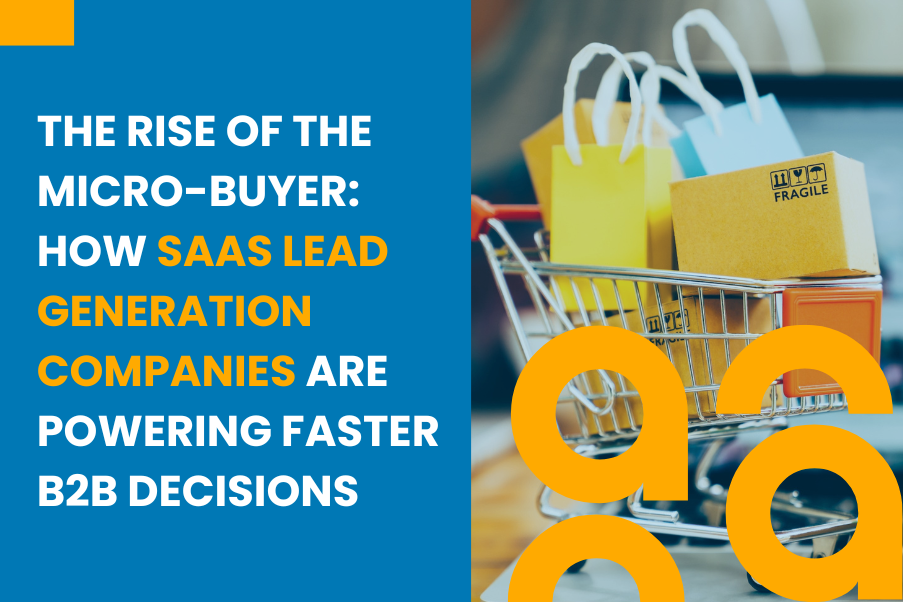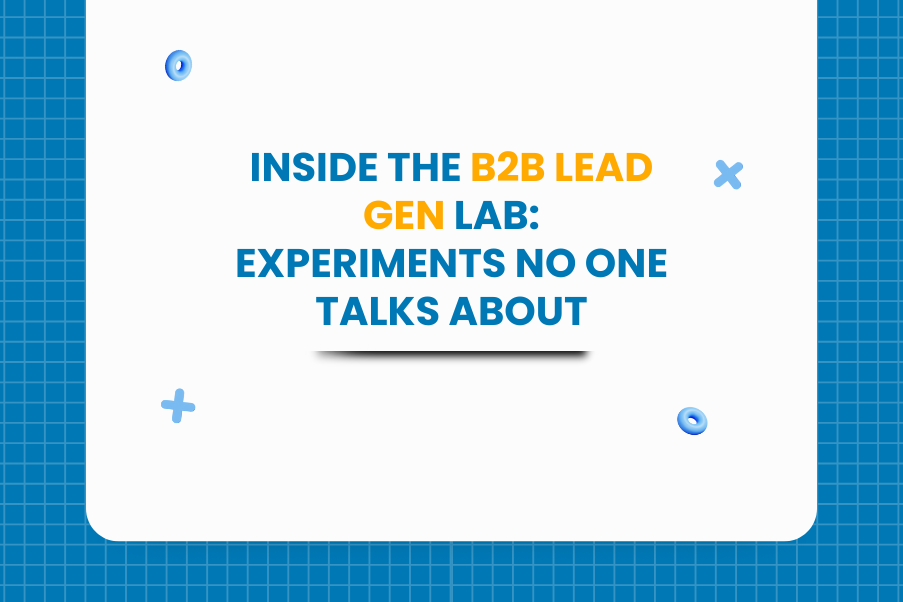Smarter Growth with ABM Services for B2B: How Modern Teams Turn Accounts into Revenue Engines

Introduction: Why Traditional Lead Gen Leaves Teams Struggling
If you are a B2B marketer in the USA, you know the frustration of chasing high lead volumes that appear promising on reports but rarely convert into paying customers. Sales teams end up with cold prospects, marketing teams are pressured to deliver vanity numbers, and leadership often questions where the real revenue is. Generic lead generation creates a cycle of wasted budgets and unnecessarily long sales cycles.
ABM services for B2B change that equation. Instead of chasing every possible lead, they help businesses zero in on the right accounts, nurture meaningful engagement, and convert focus into growth.
In the sections ahead, you’ll learn what these services include, why they matter to modern B2B teams, the benefits they deliver, common pitfalls to avoid, and how you can use them to turn target accounts into true revenue engines.
What ABM Services for B2B Really Include
Modern ABM is a structured strategy that focuses on account-level growth rather than volume-driven marketing. Effective Acount Based Marketing services cover multiple areas designed to align sales and marketing while maximizing engagement.
1. ICP Profiling and Target Account Selection
The foundation of ABM begins with identifying the right accounts. Services typically include developing an Ideal Customer Profile (ICP) using firmographic data, technographic insights, and revenue potential. This sharpens focus and avoids wasted outreach.
2. Intent Data and Buyer Signals
ABM services use tools to track buyer behavior, such as website visits, content downloads, and keyword searches. These signals highlight which accounts are actively researching solutions. Acting on these insights allows businesses to engage buyers at the right time.
3. Personalized Campaigns
Personalization in ABM means adapting content and messaging to specific challenges and objectives of decision-makers inside an account. Campaigns may include targeted advertising, custom landing pages, or customized webinars that speak directly to pain points.
4. Sales and Marketing Alignment
ABM creates collaboration between sales and marketing by giving both teams ownership of the same accounts. With clear account plans and shared metrics, each side contributes to moving accounts through the pipeline.
5. Measurement and Optimization
ABM services are performance-driven. Providers measure results at the account level, tracking engagement, pipeline acceleration, and revenue impact. This visibility makes it easier to refine campaigns and prove ROI.
Why B2B Teams Need ABM Services
B2B sales cycles in the USA are complex, with long decision-making processes involving multiple stakeholders. Traditional lead generation falls short because it is not designed for multi-person buying committees or extended timelines.
B2B Account Based Marketing services address this gap by aligning marketing strategies with how modern buyers purchase. Teams using ABM focus on fewer but higher-value accounts, reduce wasted spending on low-fit leads, and create clear visibility into account journeys.
Research shows that most B2B buying groups involve 6 to 10 decision-makers, each contributing their own research. ABM services are built to address this complexity, helping businesses reach the right people with the right message.
The Key Benefits of Account Based Marketing Services for B2B
1. Higher Conversions
By focusing on accounts that match the ICP and show intent, conversions rise. Instead of nurturing cold leads, businesses engage with buyers who are already exploring solutions.
2. Shorter Sales Cycles
Targeted engagement with decision-makers reduces the time it takes to move opportunities forward. Buyers spend less time validating solutions because campaigns address their specific needs early in the process.
3. Better ROI and Attribution
ABM campaigns are easier to tie back to revenue because they are account-specific. Marketers gain visibility into exactly how accounts respond and what leads to closed deals.
According to a report, 76% of marketers running ABM programs see higher ROI compared to other marketing efforts.
4. Stronger Alignment Between Sales and Marketing
ABM creates accountability across teams by linking activities directly to revenue outcomes. Instead of disagreements about lead quality, sales and marketing focus on common targets and results.
Common Pitfalls to Avoid in ABM
Despite the benefits, some ABM initiatives fail due to common mistakes.
- Overly broad targeting: Treating ABM like traditional lead generation reduces impact.
- Weak alignment: If sales and marketing still work separately, campaigns lose effectiveness.
- Superficial personalization: Decision-makers expect insights, not generic templates.
- No measurement framework: Without account-level tracking, ROI cannot be proven.
In fact, 66% of ABM programs underperform due to weak execution in personalization and measurement. Addressing these gaps is critical for long-term success.
How Does Account Based Marketing Work in Real Life?
Seeing how ABM works in practice helps teams understand its potential.
- B2B account based marketing examples: At Almoh Media, we have worked with B2B companies to move beyond volume-driven prospecting. Through Strategic ICP profiling and the use of intent signals, we built highly targeted account lists. By executing customized campaigns with hyper-personalized messaging, our clients achieved stronger engagement rates and converted more target accounts into qualified opportunities.
- Account based marketing types: Approaches range from one-to-one (custom campaigns for top accounts), to one-to-few (clusters of accounts with shared traits), and one-to-many (automated campaigns across a broader audience). Almoh Media applies all three depending on client goals, industry, and deal size.
- Best account based marketing tools: Platforms such as Demandbase, 6sense, and Terminus are widely used to track intent signals, personalize outreach, and analyze engagement.
As per a report, the global ABM platform market is expected to grow at more than 12% annually, showing the increasing adoption of technology in supporting ABM strategies.
Why ABM Services Are the Smarter Path to Growth
For B2B companies in the USA, ABM services for B2B provide a practical way to shift focus from volume to value. By targeting only accounts that truly matter, businesses reduce wasted marketing spend, create stronger engagement, and demonstrate marketing’s contribution to revenue.
The truth is, 57% of B2B marketers using account-based strategies report them as highly effective for improving customer retention compared to traditional lead generation. This highlights how ABM is not just about acquisition but also long-term growth.
How Almoh Media Delivers ABM Services for B2B
At Almoh Media, we focus on helping B2B companies in the USA move beyond traditional lead generation. Our ABM services for B2B combine strategy, data, and execution to help teams concentrate on accounts with the highest revenue potential.
Here’s what we provide:
- ICP and Buyer Persona Development: We work with you to clearly define your ideal customers and identify high-value accounts.
- Intent Data and Market Signals: Our services include monitoring real-time buyer activity to capture accounts actively searching for solutions.
- Personalized Campaigns: We create highly relevant campaigns across channels, ensuring every touchpoint resonates with decision-makers.
- Sales and Marketing Alignment: We align both teams under one strategy, providing joint account plans and clear metrics.
- Analytics and Reporting: With advanced reporting, you’ll see measurable results on account engagement, pipeline velocity, and revenue.
Our services are built for agencies, enterprises, and B2B teams that want growth that is measurable and sustainable.
Practical Steps to Get Started
If you are considering ABM services, here are the steps to move forward:
- Develop your ICP with clarity and focus.
- Leverage intent data to identify accounts showing active interest.
- Choose the right tools that provide visibility into account engagement.
- Align sales and marketing teams with shared goals and responsibilities.
Track account-level metrics to measure impact and improve campaigns.
Final Thoughts: Turning Accounts into Revenue Engines
For B2B companies in the USA, the choice is clear. Businesses can continue investing in traditional lead generation with low conversion rates, or they can adopt ABM services for B2B that focus on real growth. By engaging the right accounts, aligning internal teams, and measuring outcomes at every stage, ABM helps turn accounts into predictable revenue engines.
Almoh Media has the expertise and tools to guide your team through this shift. If your goal is smarter growth, stronger alignment, and measurable impact, ABM is the path forward. Learn more here and connect with us today.
Introduction
If you’re using content syndication, chances are you see it as just another way to get your content in front of more eyes. That’s fine, but there’s a lot more hidden beneath the surface. When you allow its full potential, content syndication ROI can surprise you, and it doesn’t take much to shift perception.
Let’s look at fresh data, outline a winning content syndication strategy, and show how U.S. B2B teams can get real value from it. Let’s begin!
What Is Content Syndication?
At its simplest, content syndication means sharing your B2B content: whitepapers, case studies, blogs on someone else’s site or network. This can be paid or free. You expand your reach, tap into new networks, and generate visibility, often reaching audiences you’d otherwise miss.
Why ROI From Content Syndication Deserves a Second Look
1. Huge lead production for relatively low spend
According to recent studies, the average cost per lead with content syndication is around $43. That’s far lower than other tactics, so even moderate conversion rates can offer solid returns.
2. Fast pipeline growth
Some platforms report that customers see 300–500% return on investment within three years. That’s not fluff – it’s real pipeline growth.
3. Verified conversion tracking methods
With UTM tagging and targeted vendor reports, U.S. marketers can track everything from initial syndication click to closed deal.
4. Built-in trust and positioning
Syndicating through known sites can give you indirect credibility, boosting brand awareness and authority without extra effort.
B2B Content Syndication Strategy: How to Do It Right
A good content syndication strategy starts long before content hits a third-party platform:
a). Pick assets that matter
Whitepapers, case studies, and long-form guides work best. They not only attract interest but also help establish your brand as industry-relevant.
b). Target lead quality, not rush volume
Instead of chasing clicks, target professionals. For example, top B2B firms average a 5.31% conversion rate on syndication offers.
c). Tag everything with UTM links
Measure traffic, engagement, bounce rates, and conversions back at your URL. This helps with syndication attribution.
d). Track core metrics
- CPL (cost per lead)
- MQL-to-SQL conversion rates
- Revenue per lead (use your average contract value)
e). Use the ROI formula
ROI= Revenue−Spend
Spend
For example, $1,000 spent → 50 high-quality leads → $5,000 average value = ($250k – $1k)/$1k = 249× ROI.
f). Optimize, rinse, repeat
Check what works by audience, site, and format. Then double down and drop what doesn’t.
Concrete U.S. ROI Stats You Can’t Ignore
| Metric | Statistics/Insight |
| Cost per lead | $43 average CPL |
| Syndication conversion rate | ~5.31% typical |
| Lead-to-deal conversion lift | 45% increase when focus is on quality |
| ROI over 3 years | 300%–500% reported |
| Projected industry growth | From $4.7 B in 2022 to $5.9 B by 2030 |
Content Syndication for Lead Gen: A Step‑by‑Step Plan
1. Define your ideal audience
Use buyer personas: titles, sectors, company size – so your content finds the right hands. This way, a sharper audience focus helps eliminate wasted spend and improves downstream lead quality.
2. Pick content with substance
Original research, how-to guides, competitive whitepapers – these both educate and convert. Plus, assets that solve specific problems tend to drive stronger engagement and more intent-driven leads.
3. Choose partners wisely
Use third-party platforms to reach U.S. B2B audiences. Look for those offering clear lead reporting and media kits. Before moving forward, ask for case studies or past performance metrics to make a more informed decision.
4. Structure campaigns with UTM tags
Make distinct tracking links for each partner and asset. This makes sure it’s easier to attribute leads, identify top performers, and compare ROI across channels.
5. Launch and monitor
Track CPL, CPL-to-SQL, cost per opportunity, pipeline driven, and revenue tied. At the same time, monitor activity in real-time to catch early trends and shift strategy fast if needed.
6. Review and refine monthly
Use metrics to shift spend toward top performers and tweak underperformers. As a result, consistent optimization keeps your syndication efforts aligned with revenue goals, not just vanity metrics.
How to Calculate Content Syndication ROI
- Calculate total spend (vendor fees + internal costs).
- Count total leads.
- Multiply leads by average deal size for potential revenue.
- Apply the ROI formula:
Revenue−Spend
Spend - Compare ROI over time to benchmark your initiatives.
This method is backed by multiple calculators and case studies.
Hidden Content Syndication Benefits
- SEO gains: Backlinks from quality sources can raise domain authority.
- Brand authority: Recognition on respected sites = credibility.
- Extended content life: A blog post can live on for months if syndicated well.
- Nurture acceleration: Leads from syndication are often further along in buying cycles.
Mistakes to Avoid and Fix Fast
Mistake: Only tracking clicks, not deals.
Fix: Tie every lead back to conversions with CRM integration. That way, you get a clearer picture of what’s actually driving revenue, not just traffic.
Mistake: Focusing only on cheap volume.
Fix: Go after quality; MQL-to-SQL rates matter most. Otherwise, your sales team will waste time on leads that won’t convert.
Mistake: Publishing irrelevant content.
Fix: Audit content – ensure tone, relevancy, and depth match syndication partner audiences. In doing so, you increase the chances of your content resonating with the right decision-makers.
Mistake: Not optimizing over time.
Fix: Regular performance review. Cut poor performers, boost winners. Over time, this helps improve ROI and keeps your content syndication strategy focused and results-driven.
Why Lead Quality Beats Volume
Not all leads are created equal. A smaller batch of high-intent leads can drive more revenue than a huge pool of low-interest ones.
Many B2B brands in the USA are shifting toward account- based syndication, where campaigns are matched to specific industries or companies. This helps improve conversion rates, shorten sales cycles, and increase customer lifetime value.
In short, prioritizing lead quality helps improve the long-term content syndication ROI, especially when targeting high-ticket accounts.
How AI Is Shaping the Future of Syndication
AI tools are starting to reshape content syndication strategy by analyzing behavior patterns and automating placements across high-performing channels.
With predictive scoring, marketers can now:
- Match content formats to individual user segments
- Forecast lead readiness using engagement scores
- Automate syndication at scale using content intent data
These innovations are raising the ceiling on what’s possible for B2B content syndication, especially for companies focused on measurable results.
About Almoh Media
Use metrics to shift spend toward top performers and tweak underperformers.
As a result, consistent optimization keeps your syndication efforts aligned with revenue goals, not just vanity metrics.
At Almoh Media, we specialize in high-impact content syndication for lead gen. We help B2B companies in the U.S. grow their pipelines by delivering:
- Verified lead generation from trusted channels
- Industry-specific targeting and campaign setup
- Transparent reporting tied to your sales funnel
- A proven strategy backed by real ROI
We understand the U.S. B2B buyer journey, and our syndication campaigns are built to generate demand, not just clicks.
Final Takeaway
Content syndication is an easy win if done smartly.
Focus on:
- Quality, not just volume
- Clear tracking and attribution
- Lead-to-deal conversions
- Continuous optimization
With $43 CPL, 5+ percent conversion, and long-term returns of 300–500%, most U.S. B2B teams can justify putting more budget behind it.
Ready to Get Real ROI from Content Syndication?
Let Almoh Media help you build a smarter lead-gen machine. We bring strategy, scale, and precision to content syndication – so your campaigns don’t just get seen; they convert. Reach out now to get started.
-
 Why the ‘Slow Lead’ Proves the Real Benefits of Outsourcing Lead Gen
Why the ‘Slow Lead’ Proves the Real Benefits of Outsourcing Lead Gen -
 The Rise of the Micro-Buyer: How SaaS Lead Generation Companies Are Powering Faster B2B Decision
The Rise of the Micro-Buyer: How SaaS Lead Generation Companies Are Powering Faster B2B Decision -
 Inside the B2B Lead Gen Lab: Experiments No One Talks About
Inside the B2B Lead Gen Lab: Experiments No One Talks About -
 5 Criteria That Separate Great B2B Content Syndication Service Providers from the Pretenders
5 Criteria That Separate Great B2B Content Syndication Service Providers from the Pretenders -
 Outsourced Telemarketing Services: When the Phone Call Still Wins in the Digital Era
Outsourced Telemarketing Services: When the Phone Call Still Wins in the Digital Era

